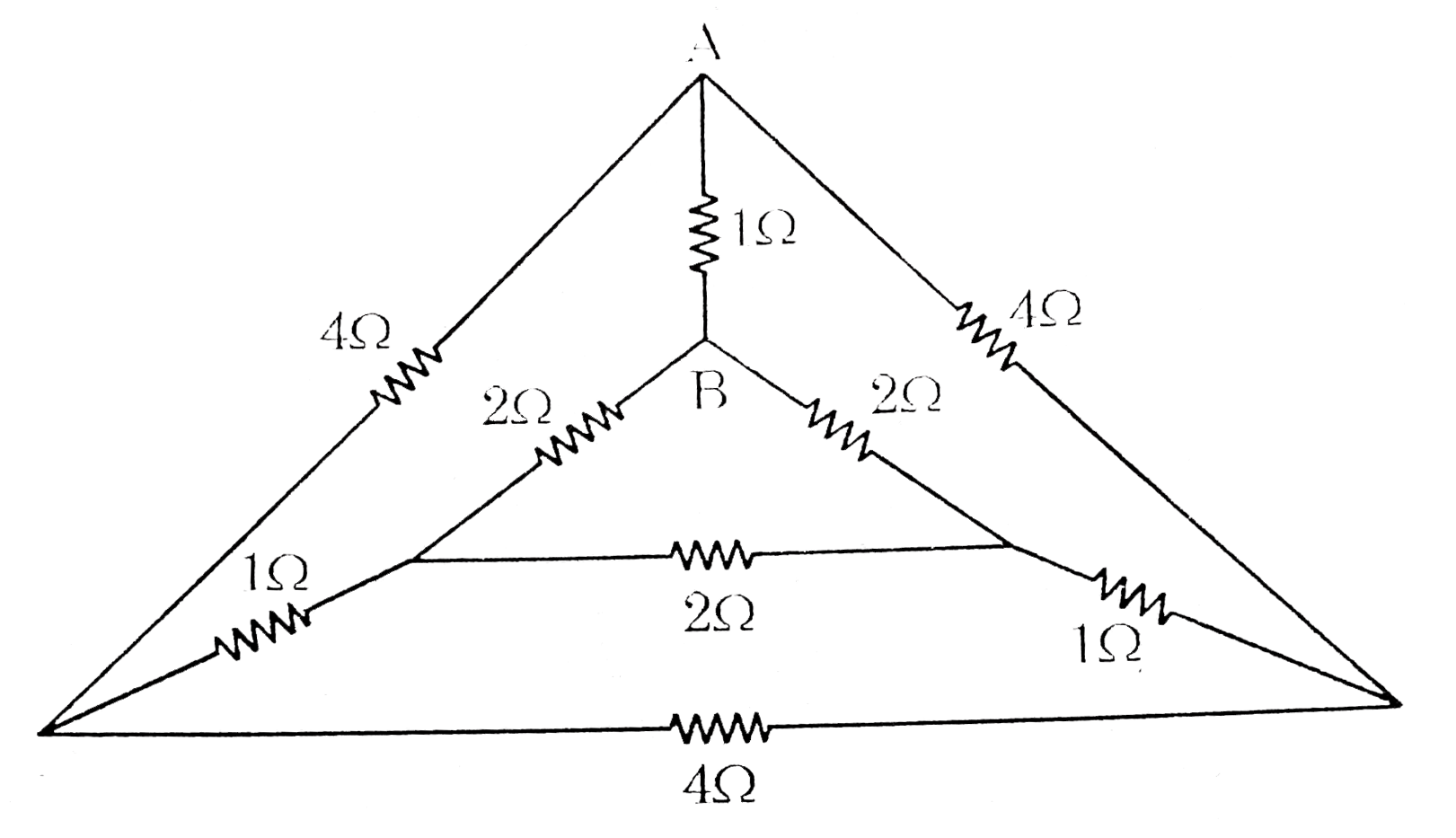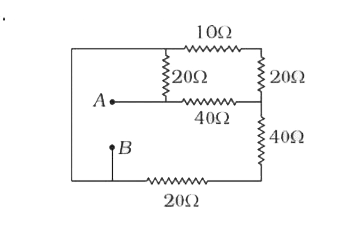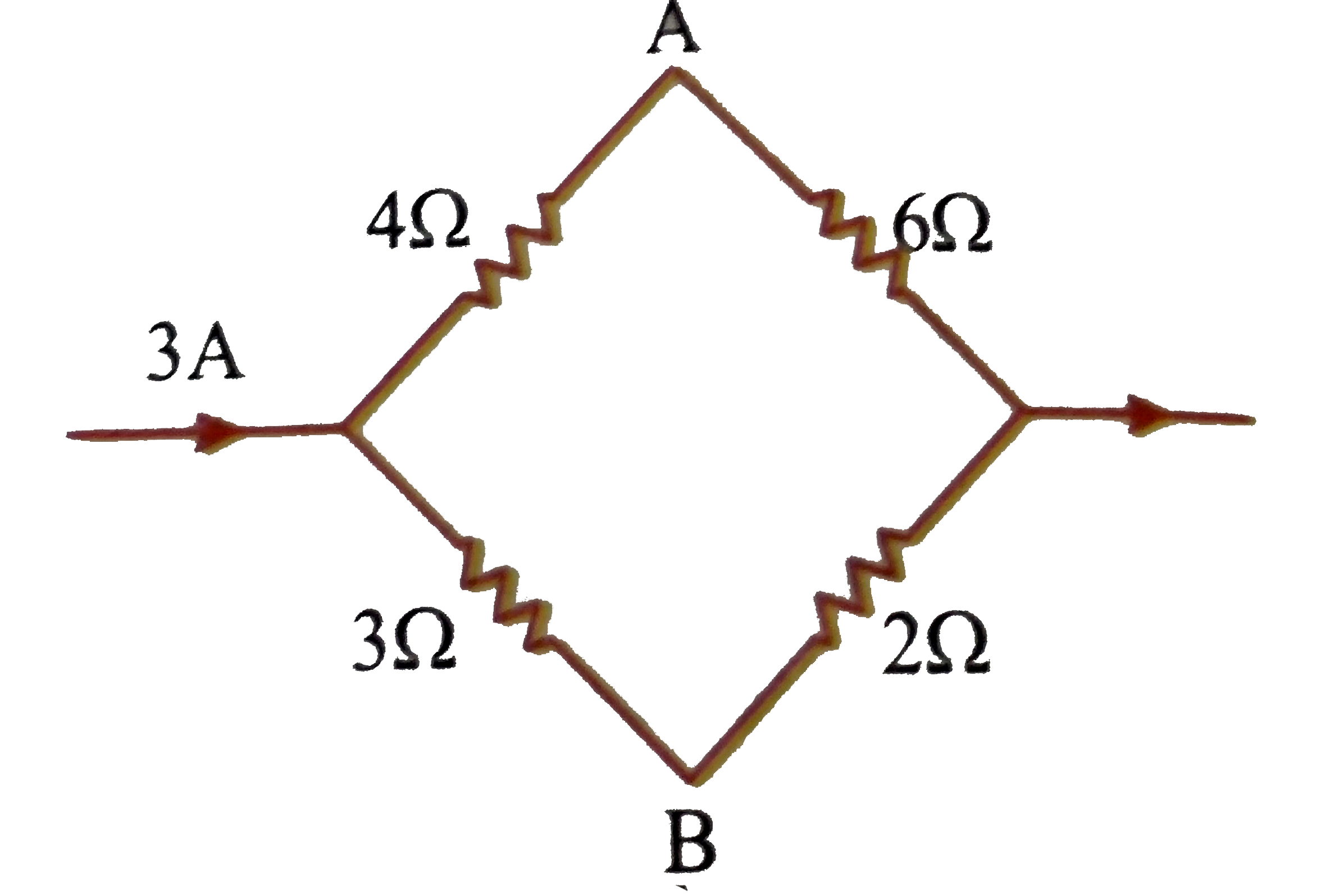Consider the circuit shown in the figure where all the resistances are of magnitude 1 k.Ω. If the current in the extreme right resistance X is 1 mA, the potential difference between A and B is

A
34V
B
21V
C
68 V
D
55V
Text Solution
The correct Answer is:A
Let us use Kirchhoff.s junction law

Now i1=1mA ( given )
potential differnece is same for resistance connected in parallel
∴i1(1+1)=i2(1)⇒i2=2mA
(i1+i2)+i2(1)=i3(1)⇒i3=5mA
(i1+i2+i3)1+i3(1)=i4(1)⇒i4=13mA
(i1+i2+i3+i4)1+i4(1)=VAB⇒VAB=34V.
|
Topper's Solved these Questions
- BULK PROPERTIES OF MATTERBook:MTG-WBJEEChapter:BULK PROPERTIES OF MATTERExercise:WB JEE PREVIOUS YEARS QUESTIONS (ONE OR MORE THAN ONE OPTION CORRECT TYPE)
Explore 1 Video
- ELECTROMAGNETIC INDUCTION AND ALTERNATING CURRENT Book:MTG-WBJEEChapter:ELECTROMAGNETIC INDUCTION AND ALTERNATING CURRENT Exercise:WB JEE Previous Years Questions
Explore 14 Videos
Similar Questions
Knowledge Check
Consider the circuit as shown in figure. The equivalent resistance between A and B is
 A97ΩB19ΩC79ΩDNone
A97ΩB19ΩC79ΩDNoneIn the circuit of figure, the current in 4Ω resistance is 1.2A , what is the potential difference between B and C?
 A3.6VB6.3VC1.8VD2.4V
A3.6VB6.3VC1.8VD2.4VConsider the circuit shown below where all resistors are of 1kΩ

If a current of magnitude 1 mA flows through the resistor marked X, what is the potential difference measured between point P and Q ?A21 VB68 VC55 VD34 V
Consider the circuit shown below where all resistors are of 1kΩ

If a current of magnitude 1 mA flows through the resistor marked X, what is the potential difference measured between point P and Q ?
View SolutionIn the circuit shown in figure, the equivalent resistance between and is __________ Ω.

View SolutionIn the circuit shown in figure, the equivalent resistance between A and B is __________ Ω.

View SolutionIn the circuit shown in the figure, the current flowing in 2Ω resistance

View Solution
A current of 3A flows in a circuit shown in the figure. The potential difference between A and b is
View Solution
